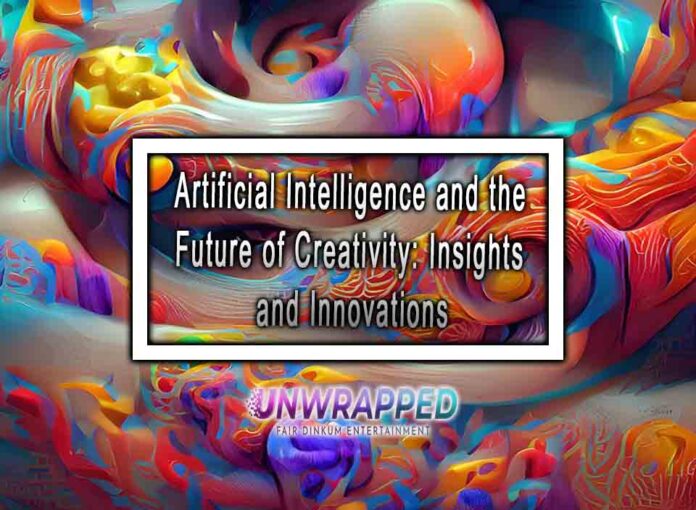Artificial Intelligence and Art
We are living in a new age of creativity, where technology and art are merging in unprecedented ways. At the heart of this revolution is artificial intelligence (AI), which is reshaping how art is conceived, created, and consumed. From generating intricate paintings to composing symphonies, AI is proving to be more than just a tool—it is becoming a collaborator and catalyst for innovation.
This article explores the profound impact of AI on modern creativity, discussing its applications across various fields, its implications for traditional artistic practices, and the ethical and philosophical questions it raises. As we navigate this technological renaissance, understanding the role of AI in the creative process is essential for artists, technologists, and society at large.
How AI is Transforming Creative Fields
Visual Arts
- AI-Generated Art:
- Tools like DALL·E and DeepDream produce stunning visuals based on textual prompts.
- Artists use AI to co-create, generating ideas or completing complex designs.
- Digital Illustration and Animation:
- AI accelerates workflows in industries like gaming, advertising, and film.
- Example: Pixar and other studios employ AI for realistic animations and scene rendering.
Music Composition
- AI as a Composer:
- Applications like OpenAI’s MuseNet and Amper Music create original compositions.
- AI assists musicians in experimenting with new genres and blending styles.
- Personalized Playlists:
- Algorithms curate music experiences tailored to individual preferences, influencing trends and consumption patterns.
Writing and Storytelling
- AI Writing Tools:
- GPT-based systems generate poetry, scripts, and novels, blurring the line between human and machine authorship.
- Content creators use AI to enhance storytelling, draft ideas, and streamline editing.
- Interactive Narratives:
- AI-driven games and apps enable dynamic storytelling that adapts to user choices.
Architecture and Design
- AI in Architecture:
- Tools like generative design use AI to optimize building layouts and aesthetics.
- Example: Zaha Hadid Architects leverage AI for futuristic and functional designs.
- Fashion and Product Design:
- AI predicts trends, designs garments, and personalizes consumer experiences.
The Advantages of AI in Creativity
Enhanced Efficiency
- Automation of Repetitive Tasks:
- AI handles labor-intensive aspects of production, allowing artists to focus on ideation.
- Speeding Up Processes:
- Design iterations and revisions become faster, saving time and resources.
Expanding Creative Boundaries
- Endless Inspiration:
- AI generates unique ideas, helping artists explore uncharted creative territories.
- Cross-Disciplinary Collaboration:
- AI fosters partnerships between artists, scientists, and technologists, broadening perspectives.
Democratizing Creativity
- AI tools are becoming accessible to non-experts, enabling anyone to explore creative endeavors.
- Example: Platforms like Canva and Runway AI make design and video editing intuitive.
Challenges and Ethical Considerations
Authenticity in Art
- Who Owns AI-Generated Art?
- Legal and ethical dilemmas arise regarding intellectual property and authorship.
- Human vs. Machine Creativity:
- Critics argue that AI lacks emotional depth and cultural context, making its creations less “authentic.”
Ethical Concerns
- Bias in AI Models:
- AI systems can unintentionally replicate societal biases, impacting representation.
- Example: Limited diversity in AI-generated portraits or narratives.
- Job Displacement:
- Automation in creative industries raises concerns about job security for traditional artists.
Over-Reliance on AI
- Dependence on AI tools may stifle originality and human intuition in the long run.
Notable Examples of AI in Creativity
Visual Art
- Edmond de Belamy:
- The first AI-generated artwork sold at Christie’s auction for $432,500, marking a milestone in AI art.
Music
- Taryn Southern:
- A musician who collaborated with AI to create her album I AM AI.
Film and Entertainment
- Morgan:
- A movie trailer entirely edited by AI, showcasing the technology’s potential in storytelling.
Philosophical and Cultural Implications
Redefining Art and Creativity
- AI challenges traditional notions of creativity, prompting questions like:
- Is art still art if created by a machine?
- Can machines truly “understand” or “feel” art?
- Philosophers and theorists explore how AI expands the definition of creativity to include non-human agents.
The Role of Artists in the AI Era
- Artists act as curators and collaborators, shaping AI outputs to reflect human intent and emotion.
- Example: Generative artists use AI as a medium, similar to paint or clay.
The Future of AI and Creativity
Emerging Trends
- Hyper-Personalized Experiences:
- AI will create tailored art, music, and entertainment based on individual preferences.
- Immersive Environments:
- Virtual and augmented reality powered by AI will redefine interactive experiences.
Collaborative Innovation
- Artists and technologists will continue to push boundaries, creating hybrid works that blend human creativity with machine intelligence.
- AI might evolve into an integral part of artistic education and practice.
Conclusion
AI is undeniably revolutionizing modern creativity, ushering in a new renaissance that merges human ingenuity with technological prowess. While it enhances efficiency, expands possibilities, and democratizes access to creative tools, it also raises critical questions about authenticity, ethics, and the role of artists in the digital age.
As we navigate this transformative era, embracing AI as a collaborator rather than a competitor will allow society to harness its full potential. By fostering dialogue and innovation, we can ensure that this technological renaissance enriches, rather than diminishes, the essence of human creativity.
References
- Christie’s Auction. (2018). Edmond de Belamy: AI Art in the Market.
- OpenAI. (2023). MuseNet: AI in Music Composition.
- McCormack, J., Gifford, T., & Hutchings, P. (2019). Autonomy, Authenticity, and Intention in AI Art.
- Zaha Hadid Architects. (2021). AI in Architectural Design.
- Journal of Artificial Intelligence Research. (2023). Cultural and Ethical Dimensions of AI Creativity.
See Also: Art vs. Cancel Culture: Exploring the Boundaries of Freedom and Fear










